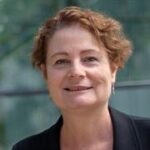2025;
Bidgood GM, Keating N, Guzman LM, Li K, Leong E, Kueh A, Babon JJ, Hockings C, Doggett K, Nicholson SE. The Ability of SOCS1 to Cross-Regulate GM-CSF Signaling is Dose Dependent. Journal of Interferon & Cytokine Research. 2025;45(2):10.1089/jir.2024.0140
Nicholson SE, Ahmed CM, Doggett K, Marasco D, Johnson HM. Editorial: SOCS: regulation of the immune system at a whole new level. Frontiers in Immunology. 2025;16:10.3389/fimmu.2025.1588549
Delconte RB, Kolesnik TB, Dagley LF, Rautela J, Shi W, Putz EM, Stannard K, Zhang J-G, Teh C, Firth M, Ushiki T, Andoniou CE, Degli-Esposti MA, Sharp PP, Sanvitale CE, Infusini G, Liau NPD, Linossi EM, Burns CJ, Carotta S, Gray DHD, Seillet C, Hutchinson DS, Belz GT, Webb AI, Alexander WS, Li SS, Bullock AN, Babon JJ, Smyth MJ, Nicholson SE, Huntington ND. Author Correction: CIS is a potent checkpoint in NK cell–mediated tumor immunity. Nature Immunology. 2024;25(2):10.1038/s41590-023-01714-8
Guzman LGM, Hyland CD, Bidgood GM, Leong E, Shen Z, Goh W, Rautela J, Vince JE, Nicholson SE, Huntington ND. CD45 limits early Natural Killer cell development. Immunology and Cell Biology. 2024;102(1):10.1111/imcb.12701
Bidgood GM, Keating N, Doggett K, Nicholson SE. SOCS1 is a critical checkpoint in immune homeostasis, inflammation and tumor immunity. Frontiers in Immunology. 2024;15:10.3389/fimmu.2024.1419951
Linossi EM, Li K, Veggiani G, Tan C, Dehkhoda F, Hockings C, Calleja DJ, Keating N, Feltham R, Brooks AJ, Li SS, Sidhu SS, Babon JJ, Kershaw NJ, Nicholson SE. Author Correction: Discovery of an exosite on the SOCS2-SH2 domain that enhances SH2 binding to phosphorylated ligands. Nature Communications. 2023;14(1):10.1038/s41467-023-42706-4
Doggett K, Keating N, Dehkhoda F, Bidgood GM, Meza Guzman LG, Leong E, Kueh A, Nicola NA, Kershaw NJ, Babon JJ, Alexander WS, Nicholson SE. The SOCS1 KIR and SH2 domain are both required for suppression of cytokine signaling in vivo. Cytokine. 2023;165:10.1016/j.cyto.2023.156167
Kedzierski L, Tan AEQ, Foo IJH, Narayanan D, Moily N, McQuilten HA, Nicholson SE, Fazakerley JK. In Semliki Forest virus encephalitis, suppressor of cytokine signaling 4 (SOCS4) is an essential modulator of immune responses that mediates the balance between immunopathology and virus clearance. Immunology and Cell Biology. 2023;101(4):10.1111/imcb.12625
Chen H, Nguyen NH, Magtoto CM, Cobbold SA, Bidgood GM, Guzman LGM, Richardson LW, Corbin J, Au AE, Lechtenberg BC, Feltham R, Sutherland KD, Grohmann C, Nicholson SE, Sleebs BE. Design and characterization of a heterobifunctional degrader of KEAP1. Redox Biology. 2023;59:10.1016/j.redox.2022.102552


